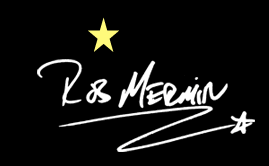The Silent Stars
Stars featured in Silents Are Golden:
Mary Pickford, Lillian Gish, Rudolph Valentino, Greta Garbo, John Gilbert, Douglas Fairbanks, Norma Shearer, Ramon Novarro, Marion Davies, Charles Chaplin, Buster Keaton, Harry Langdon, Harold Lloyd, Roscoe Arbuckle, Laurel & Hardy and more!
I trained in Paris with mime masters Marcel Marceau and his teacher Etienne Decroux, both deeply influenced by silent film. My background in the Decroux/Marceau technique gave me some insight to the traditions of the silent actors. Etienne Decroux studied acting in the 20’s and can be seen in the classic film The Children of Paradise. In Silents Are Golden I demonstrate, on stage, a few specific pantomime techniques used by the silent stars—arm gestures, hand positions, body postures, facial expressions—and illustrate them with silent film clips. While studying the best silent epics, dramas, adventures and comedies, three things became apparent:
1. The silent stars learned their skills before they got to Hollywood. The physical comedy gags were straight out of the contemporary circus clown alley. (Harry Langdon, Ben Turpin, Ford Sterling, Arbuckle, a host of Mack Sennett clowns had previous circus experience.) The acrobatic skills came from circus, vaudeville and music hall experience (Chaplin, Keaton, Laurel.) The eloquent pantomime gestures were a product of theatrical conventions of the day: Pickford was on stage by age 5; Fairbanks toured as a Shakespearean actor.
2. Contemporary stage pantomime techniques were perfectly adapted to the genre of silent film. The early film acting styles developed from histrionic theatrical convention into more naturalistic acting in the 20’s. But certain stylized movements, related to stage mime technique, were adapted and used effectively. The Delsarte movement system was clearly an influence. D.W. Griffith sent Lillian Gish to Delsarte classes twice a week; Louise Brooks was a Delsarte-based Denishawn dancer. What is often dismissed as florid acting is actually the physical eloquence demanded by the form of “motion” pictures.
3. The traditions of theatrical mime are a straight line from mid 19th Century through mid 20th Century, with silent film smack in the middle. From Delsarte and early 20th century theater and vaudeville, through Silent Film acting, and on to the Decroux/Marceau mime technique, pantomime acting in the silent cinema takes its place as a short-lived highlight of the pantomime art form.
I have a personal mission to promote the artistic and historical importance of silent films and the art of pantomime for a new generation. For audiences of Silents Are Golden, it soon becomes apparent that these films, newly accessible in the age of DVD, are as immensely enjoyable as any modern cinema.
— Rob Mermin
« back »

